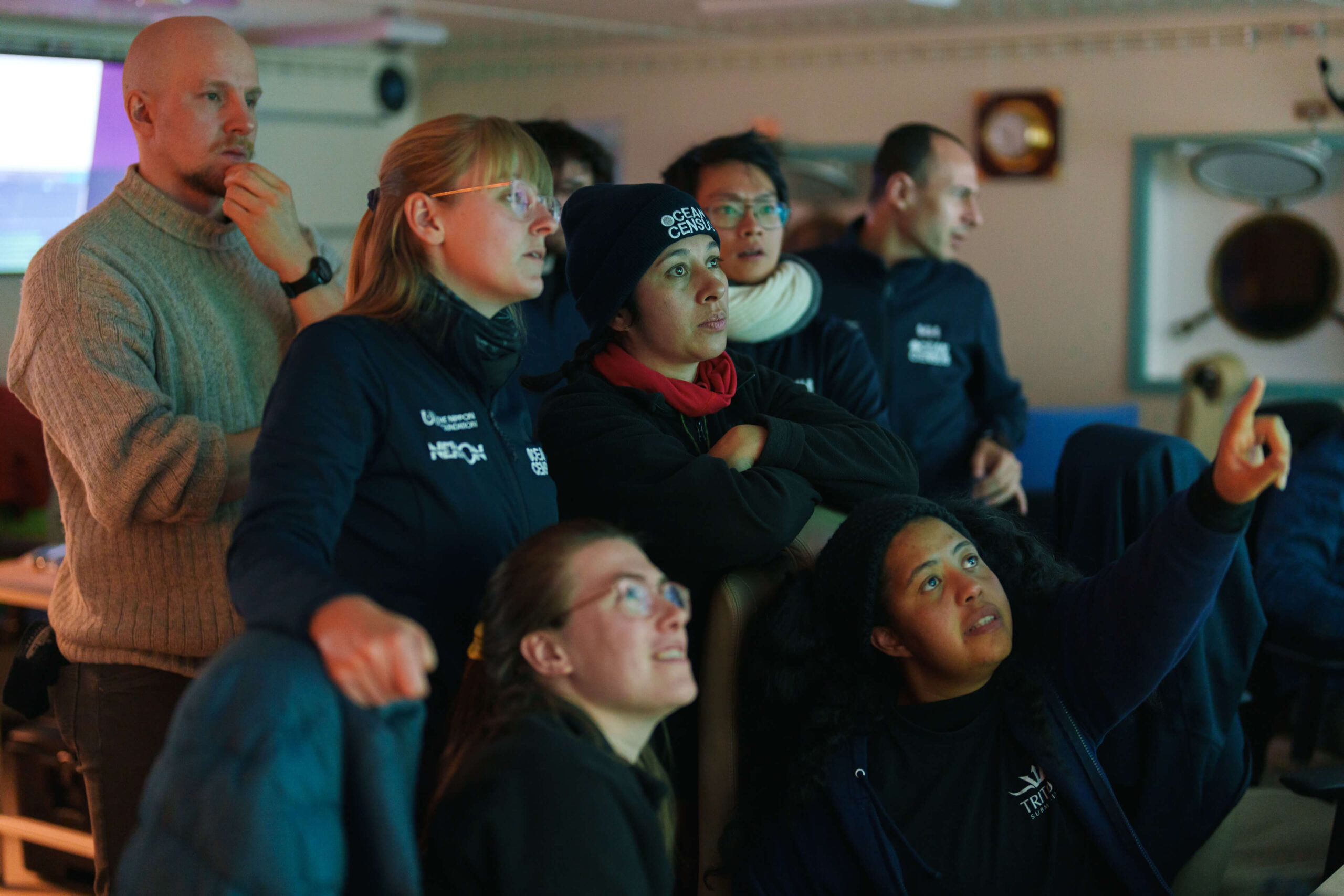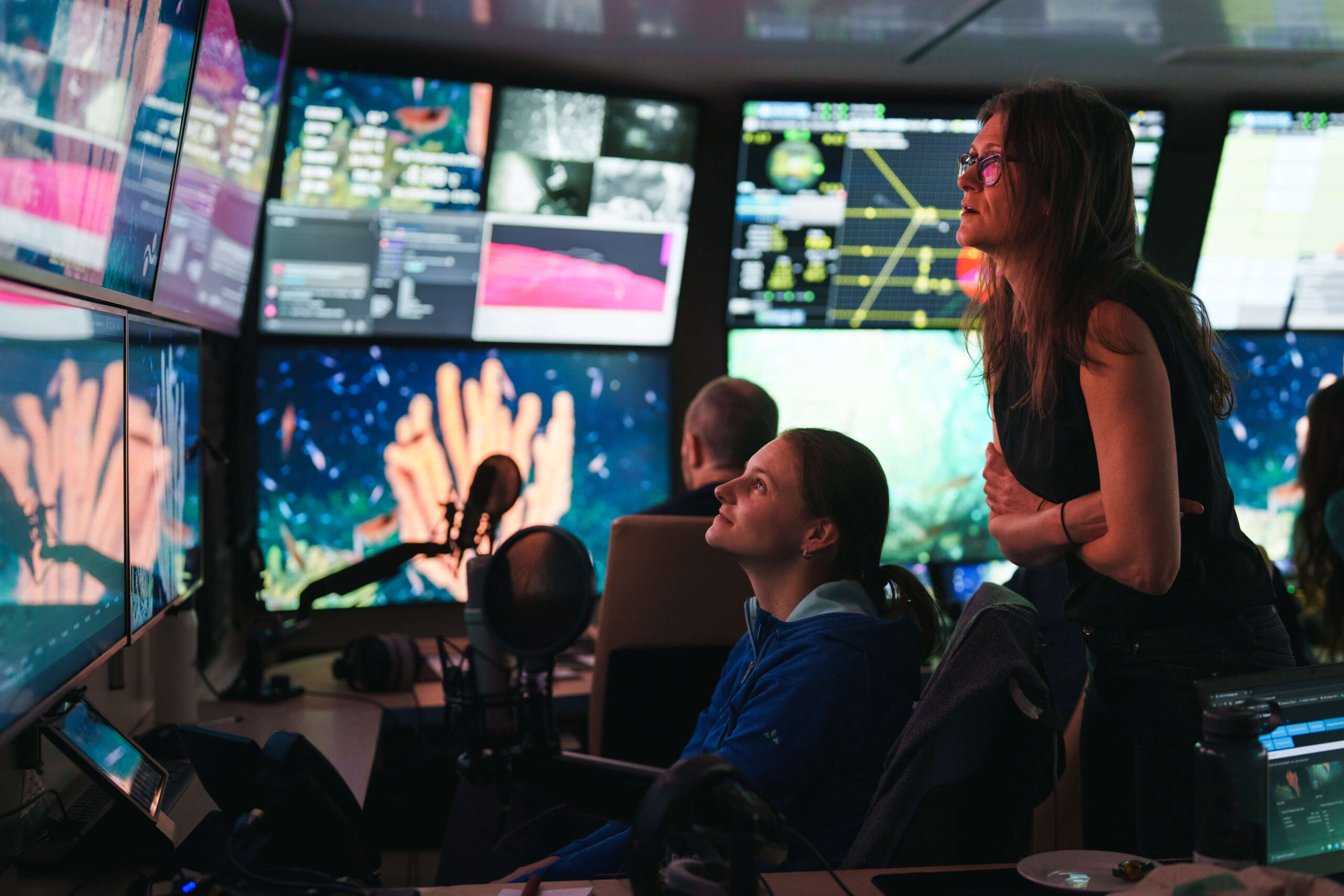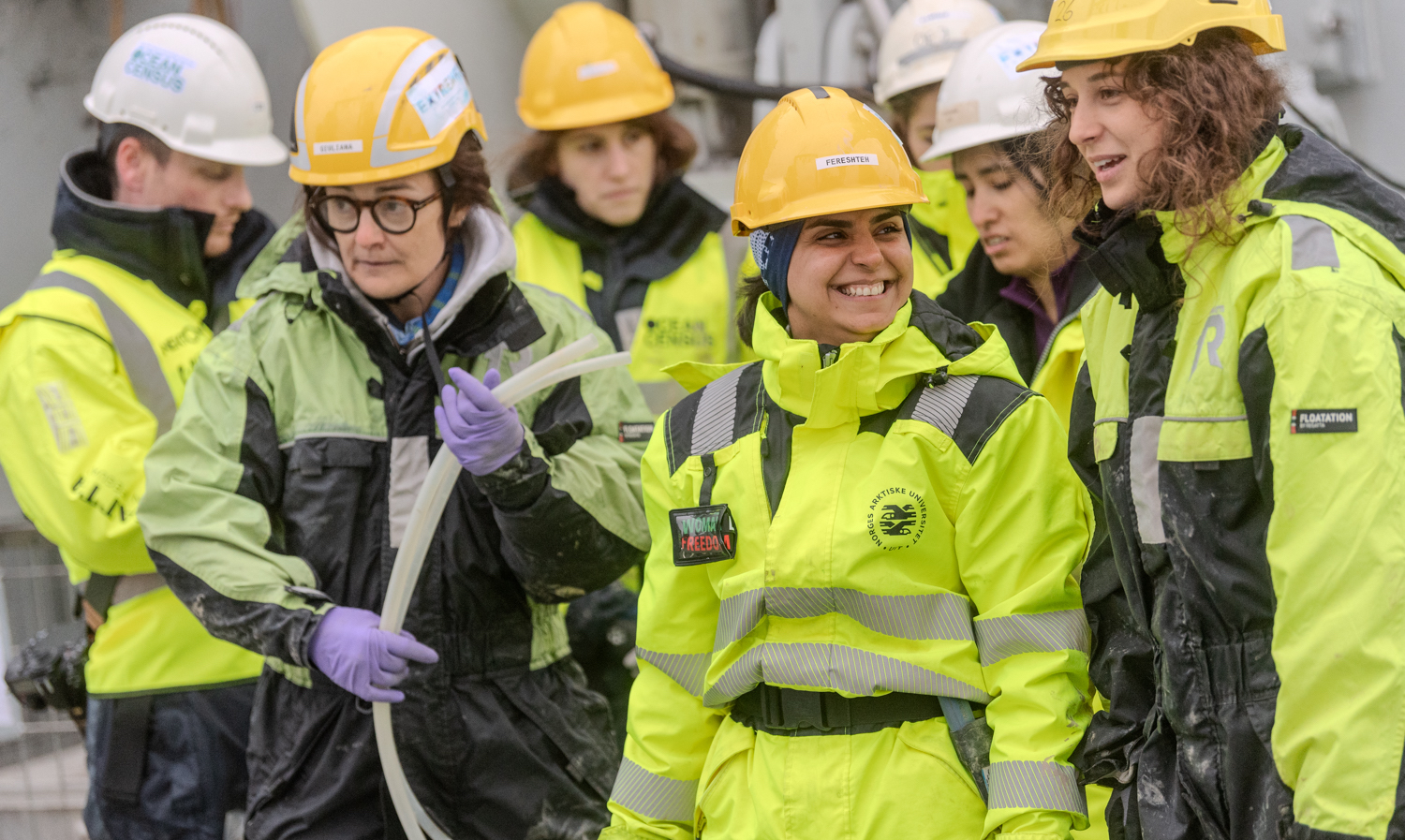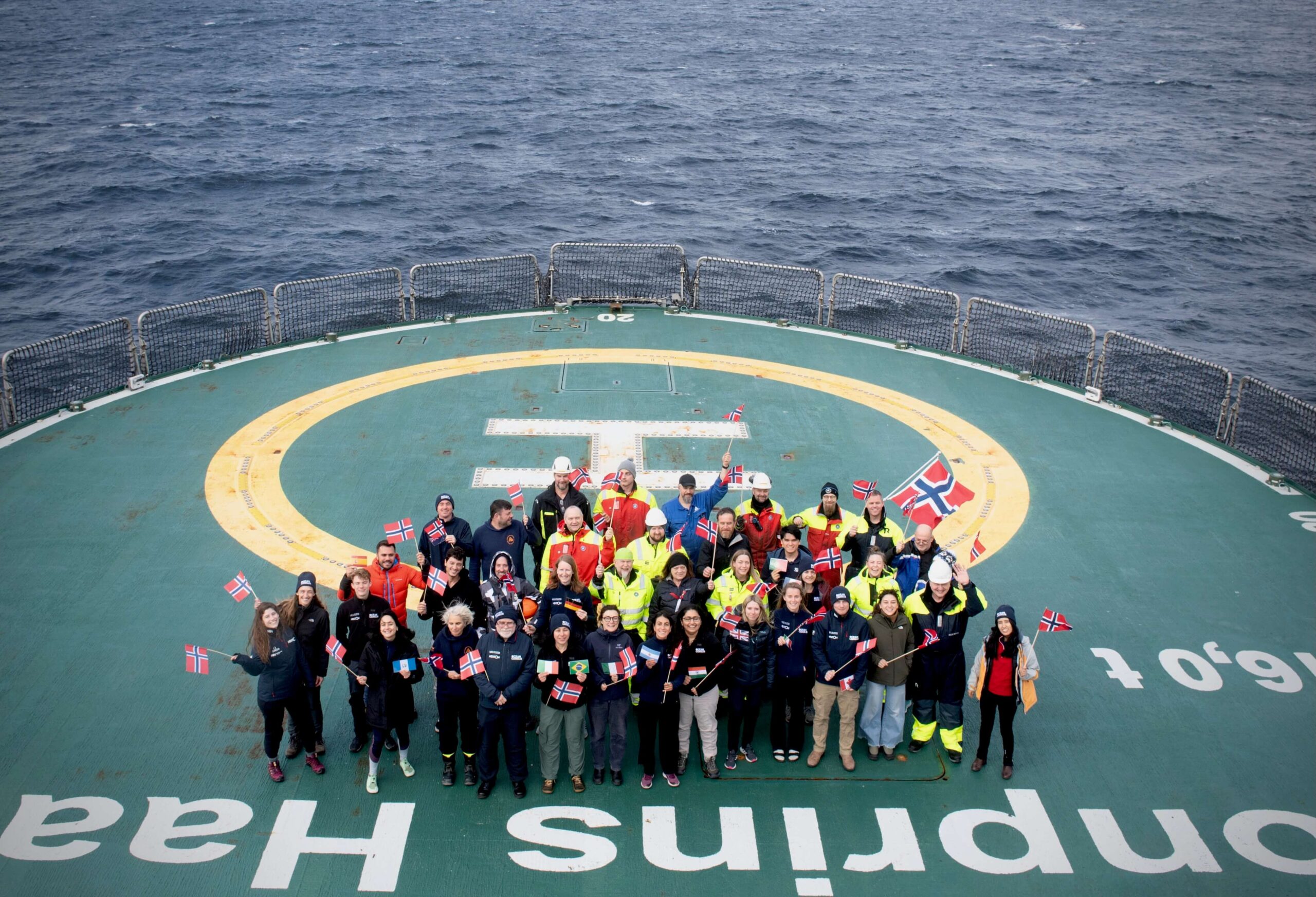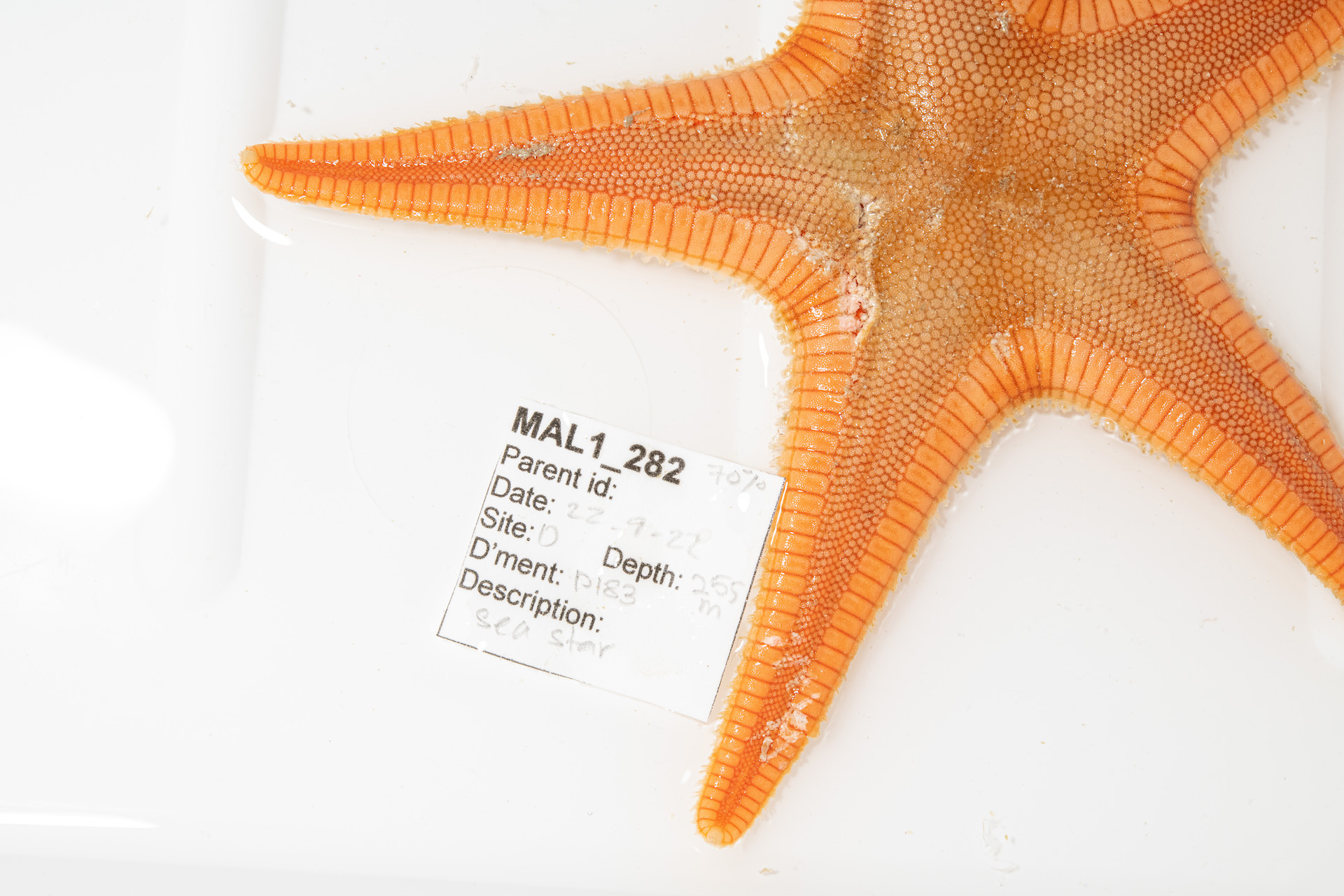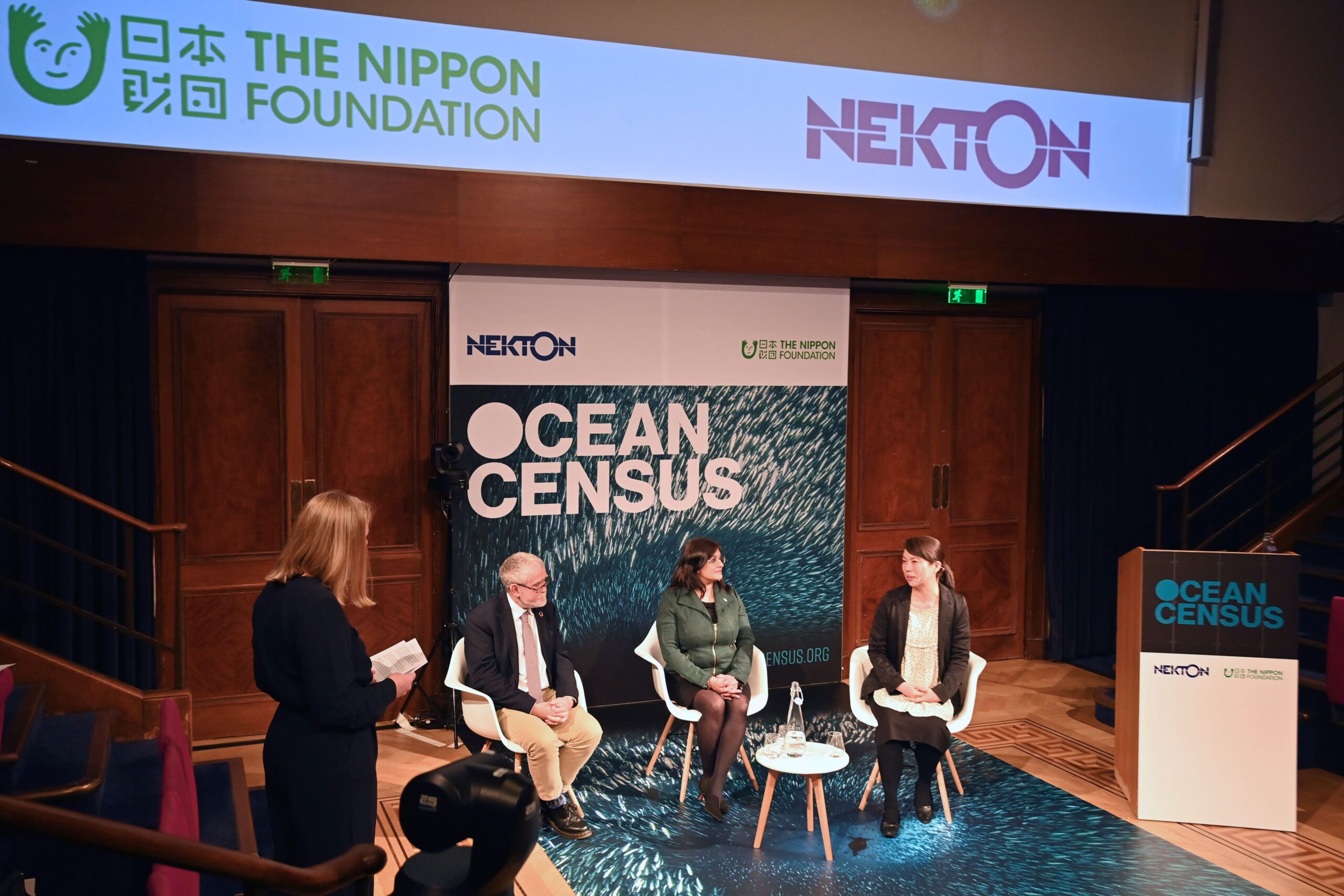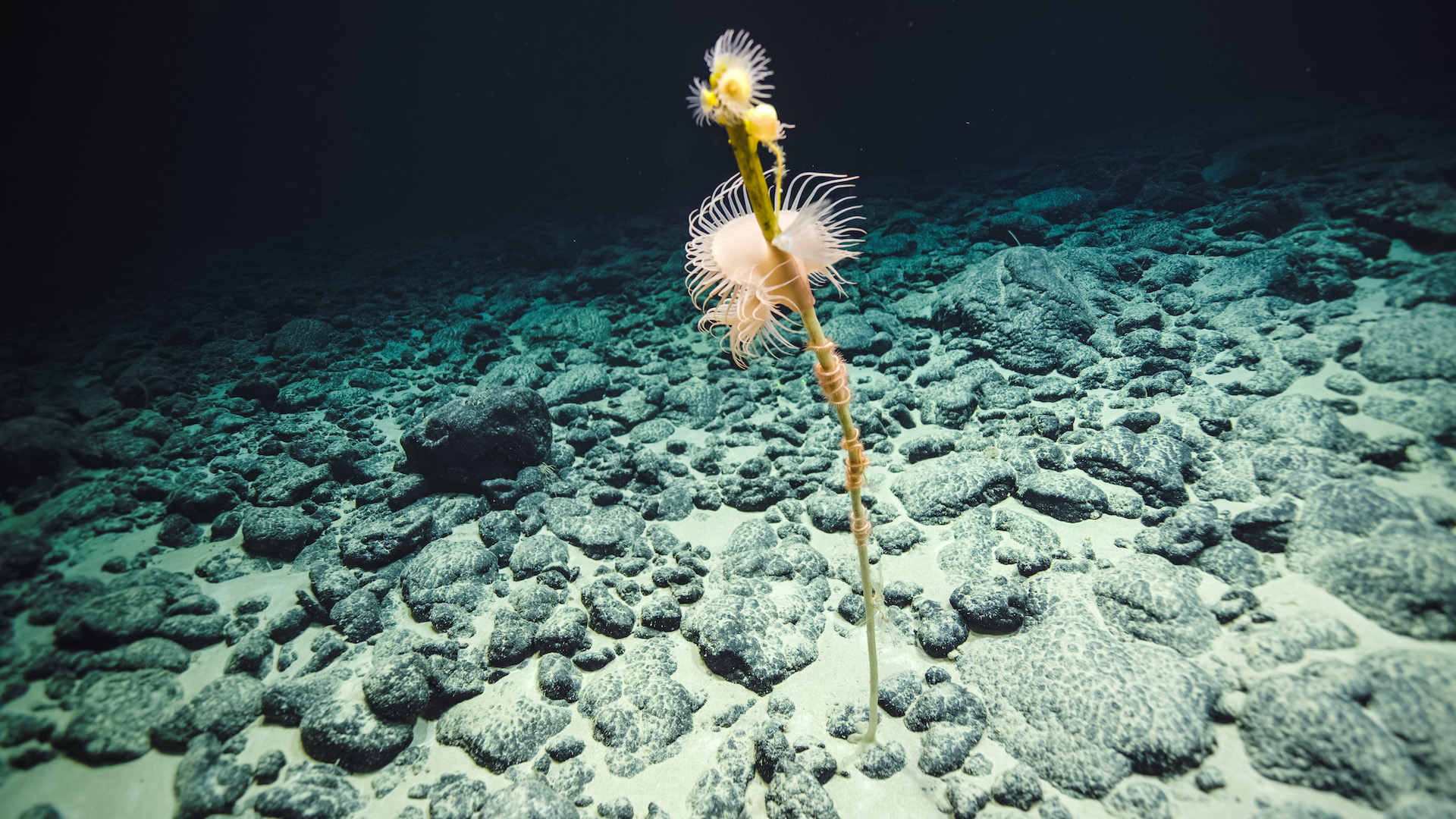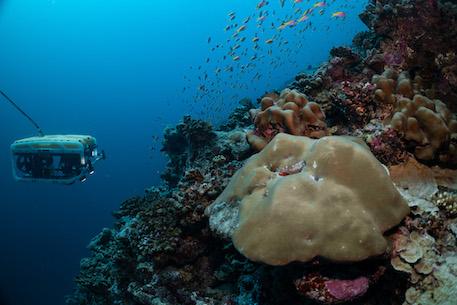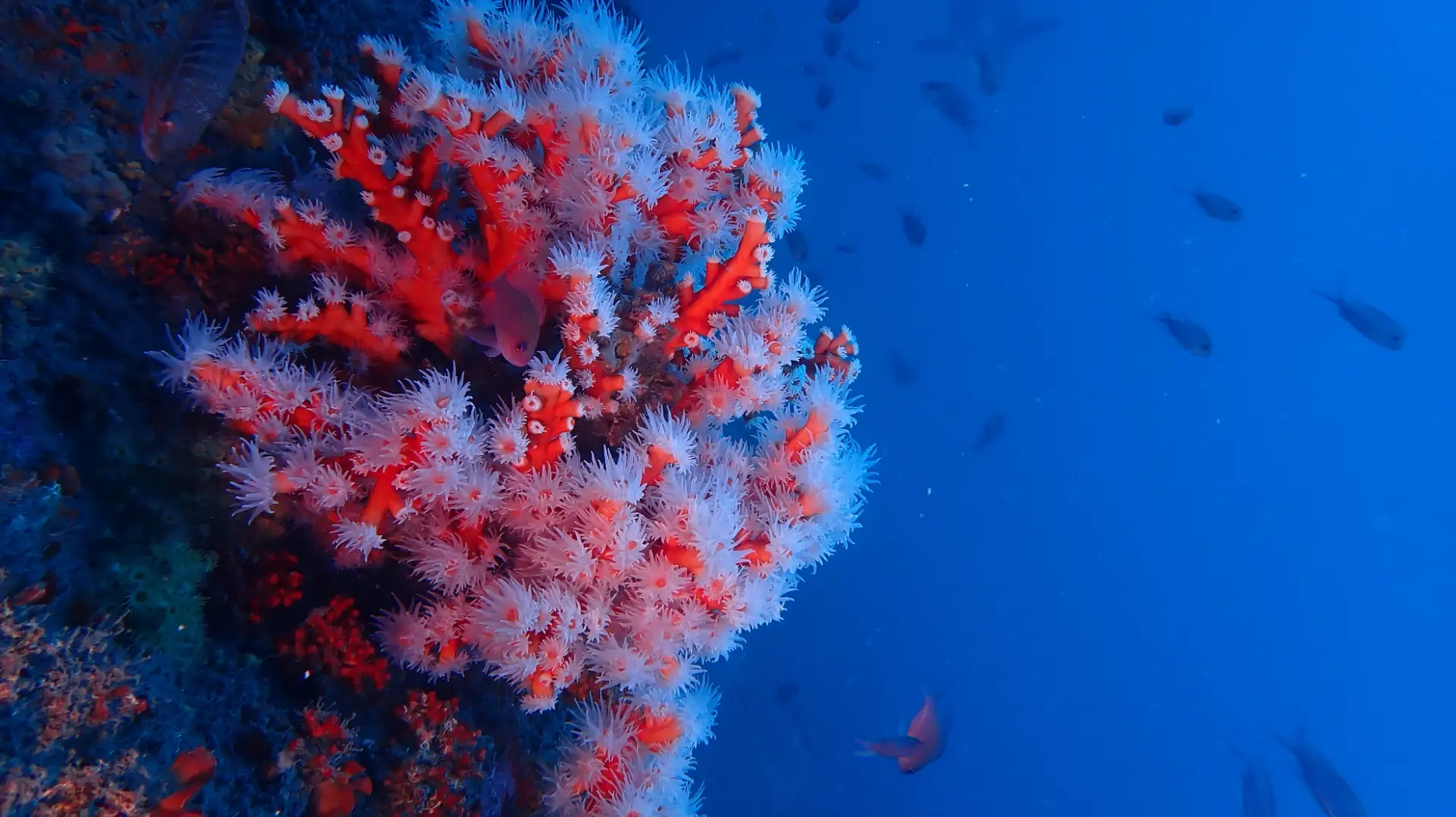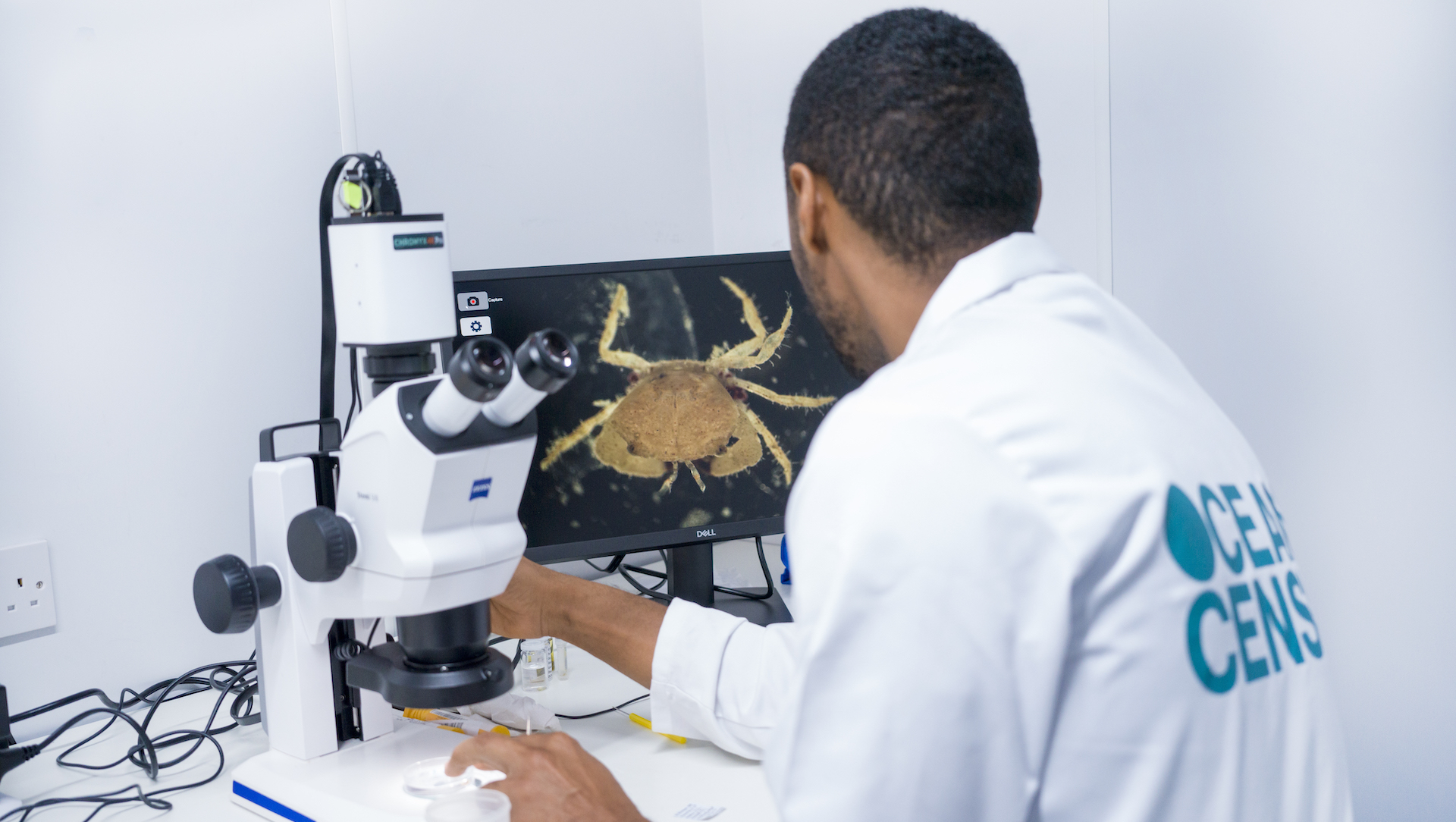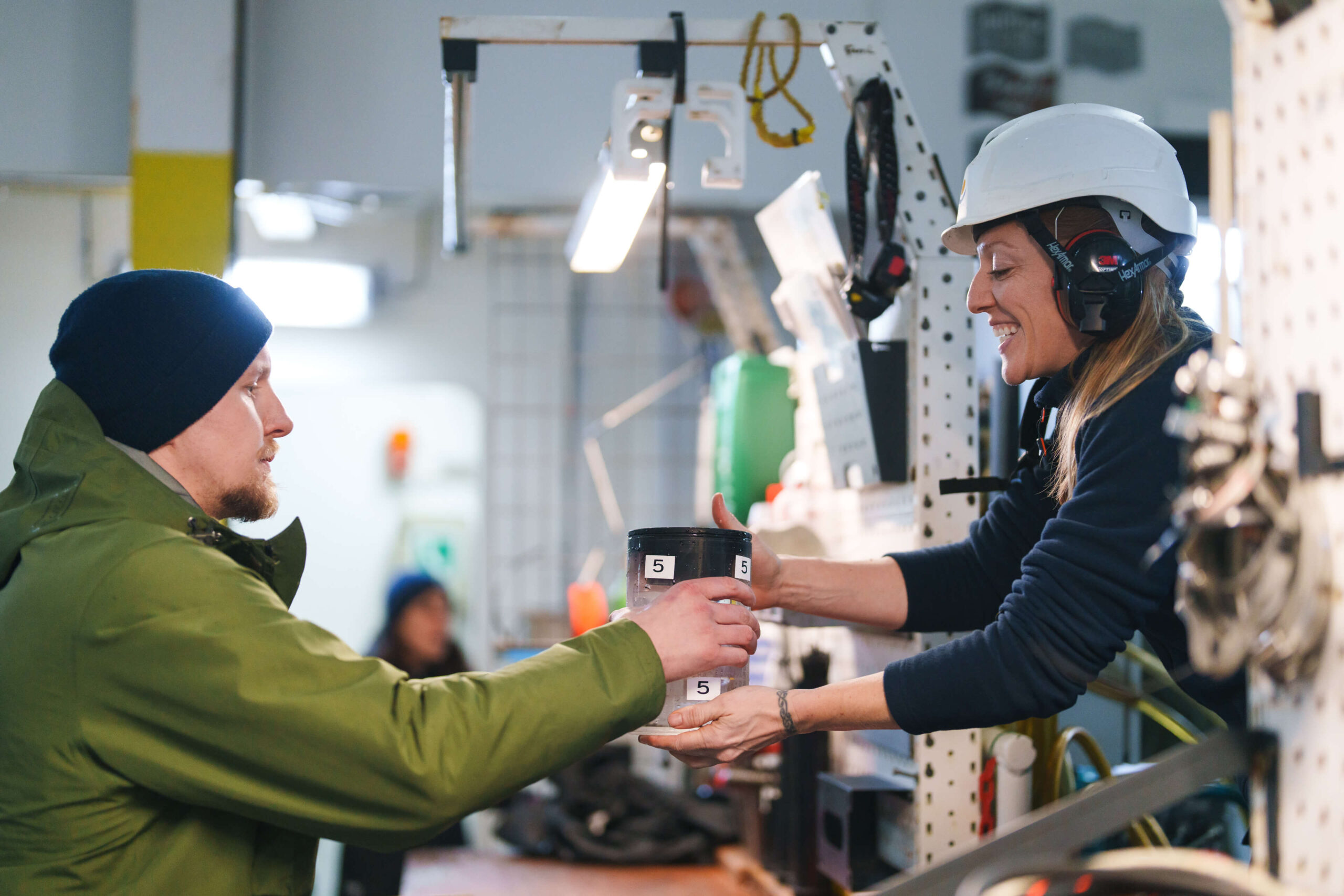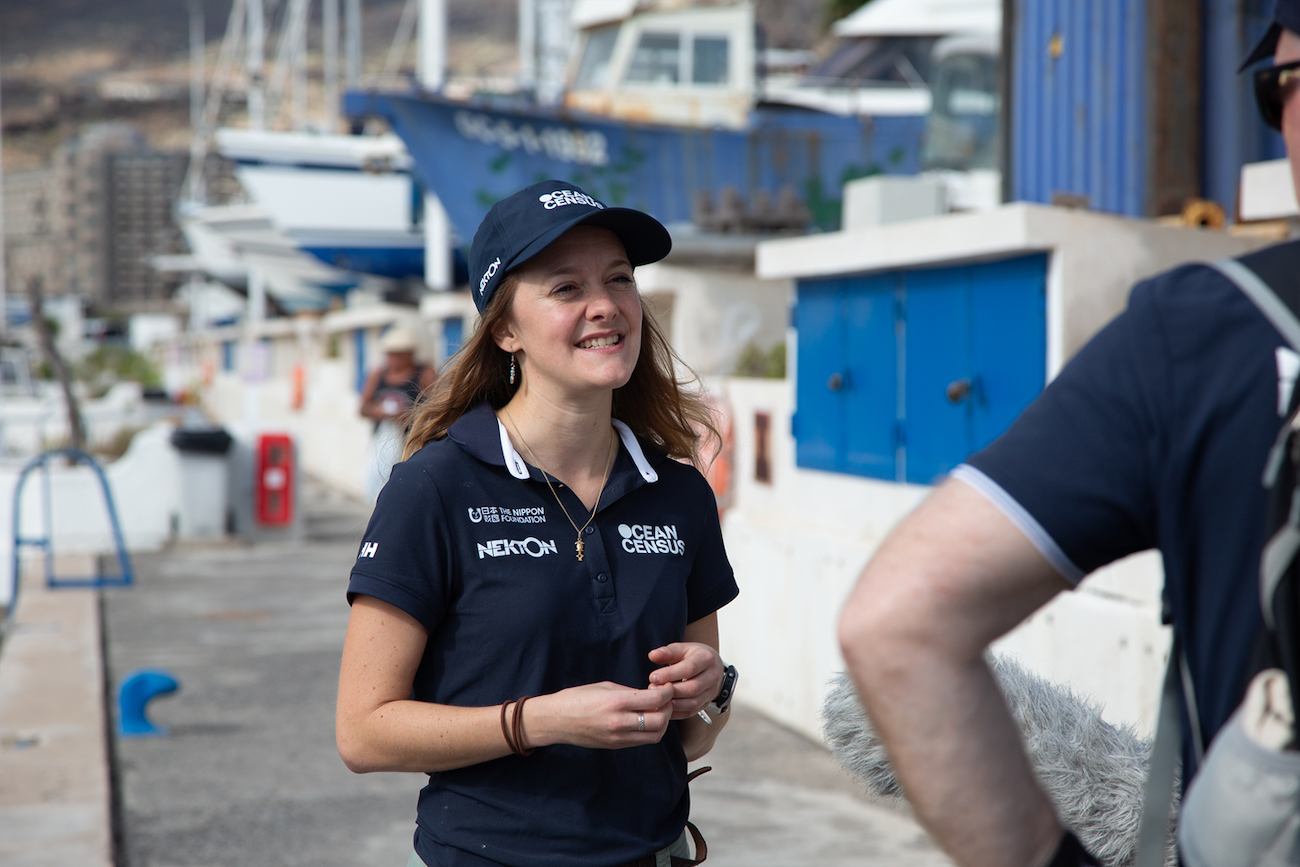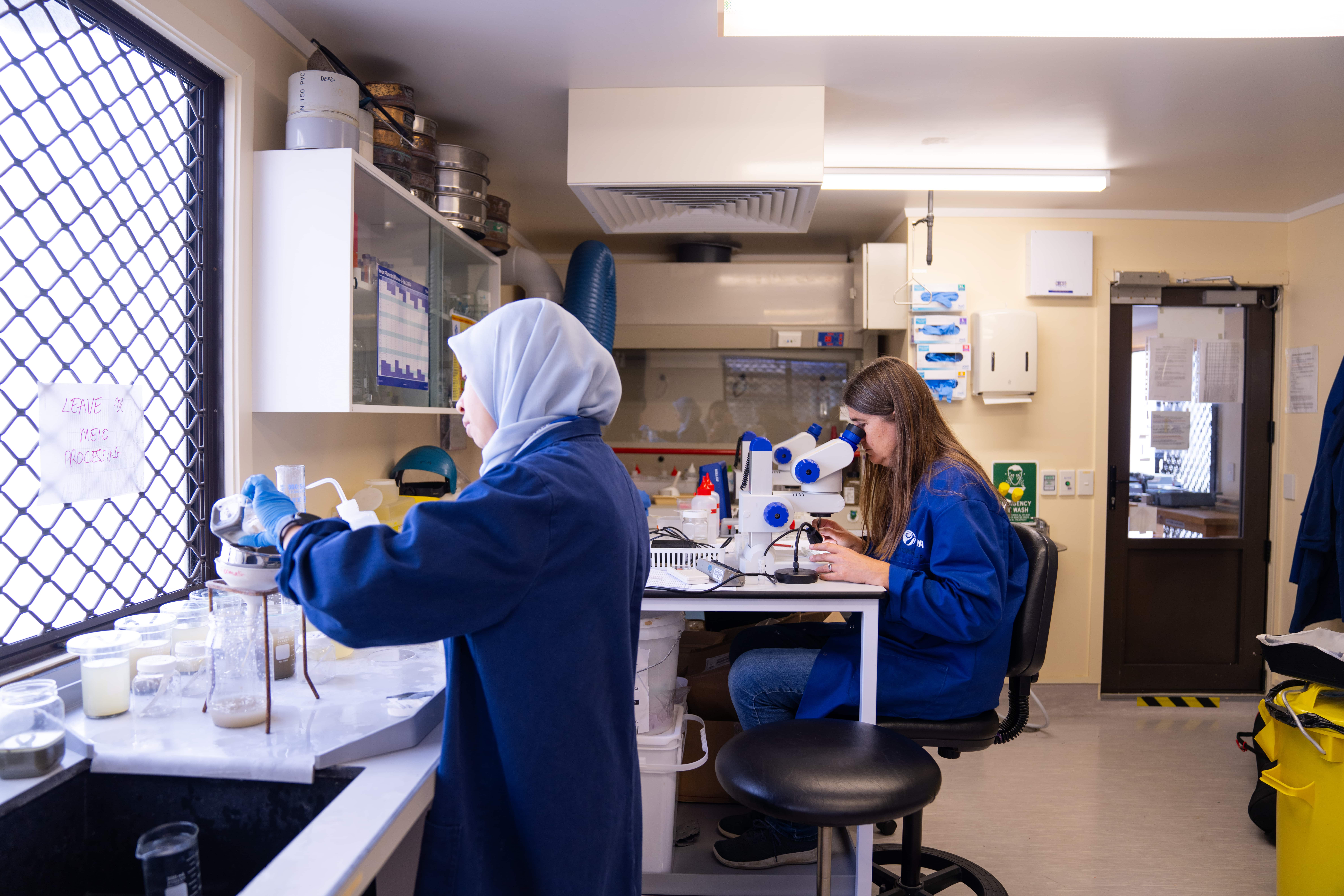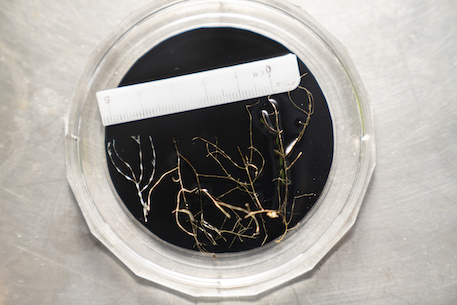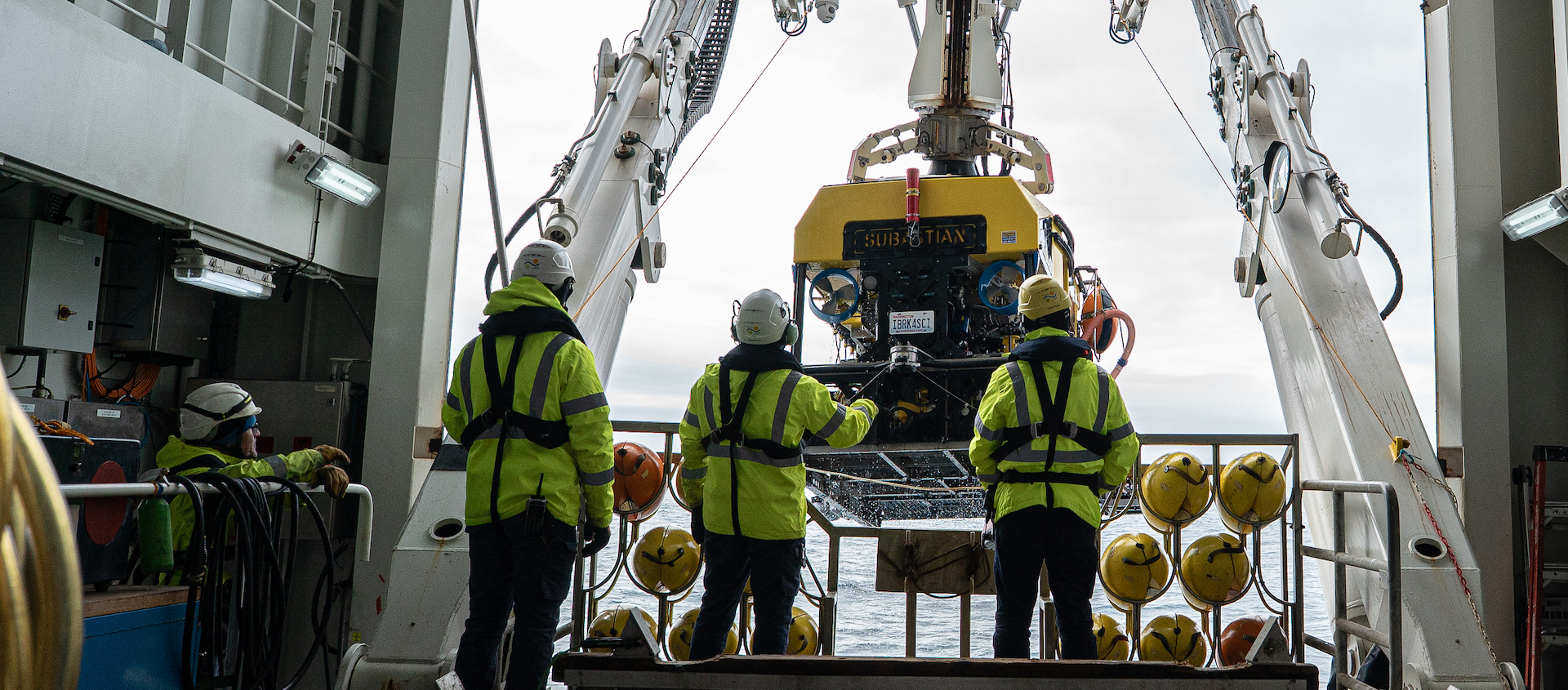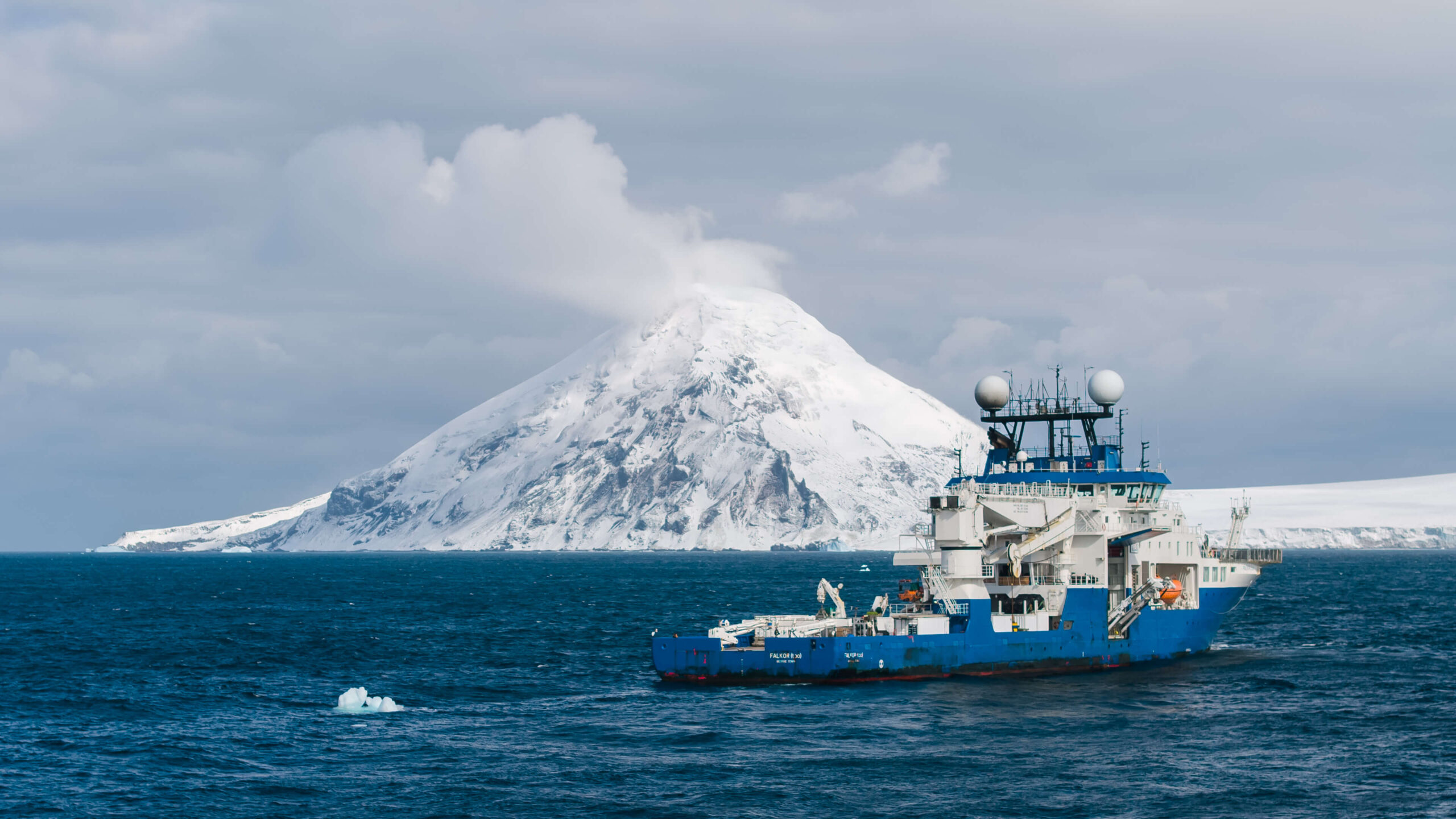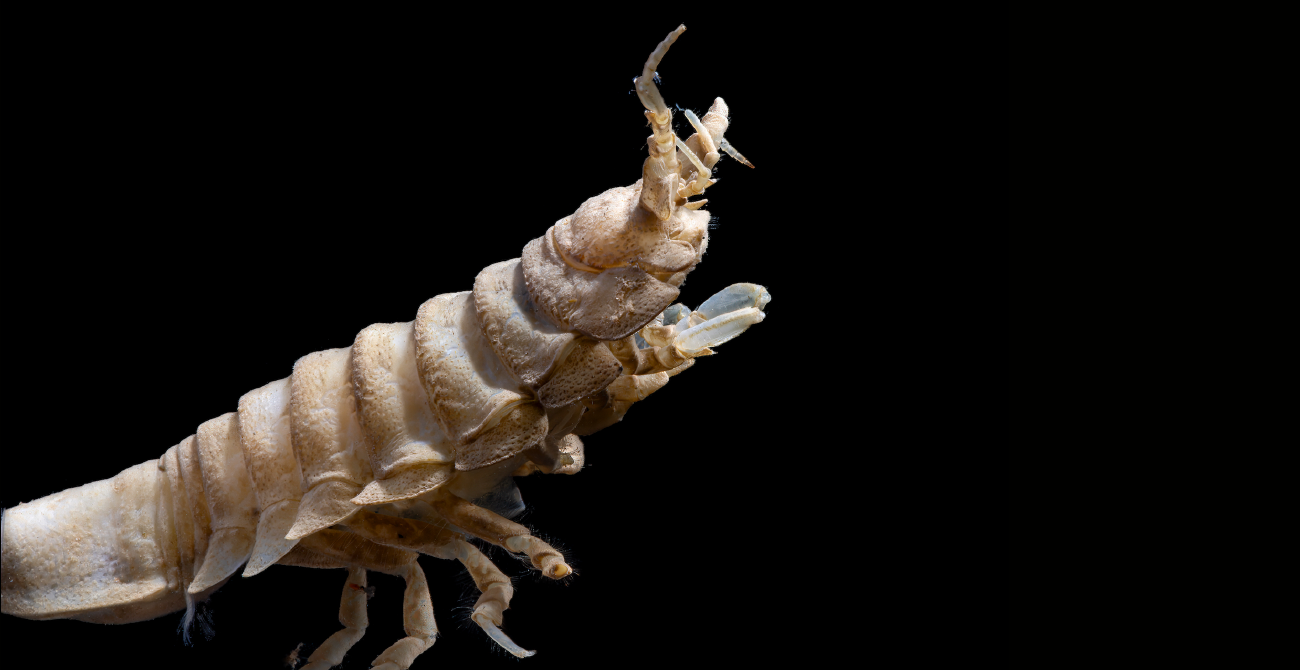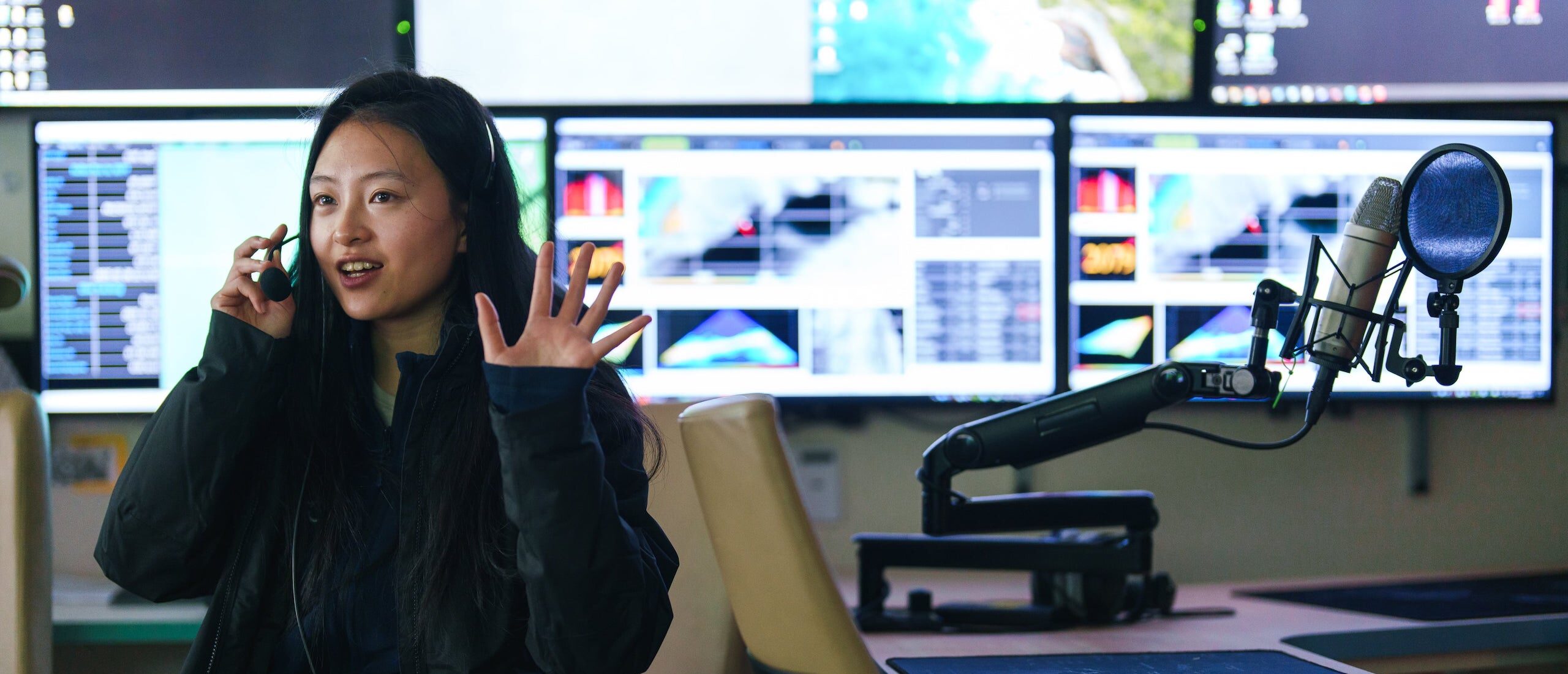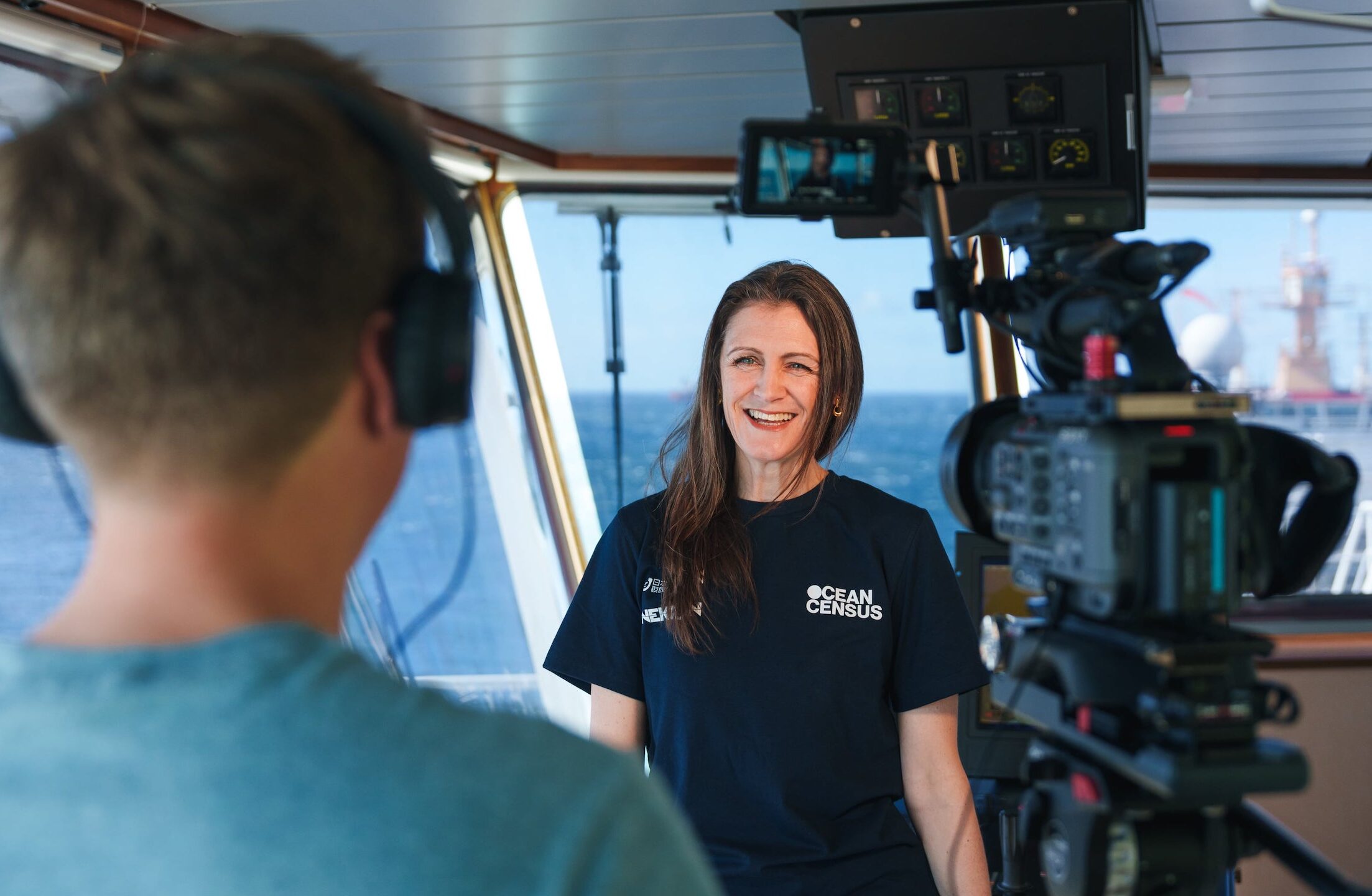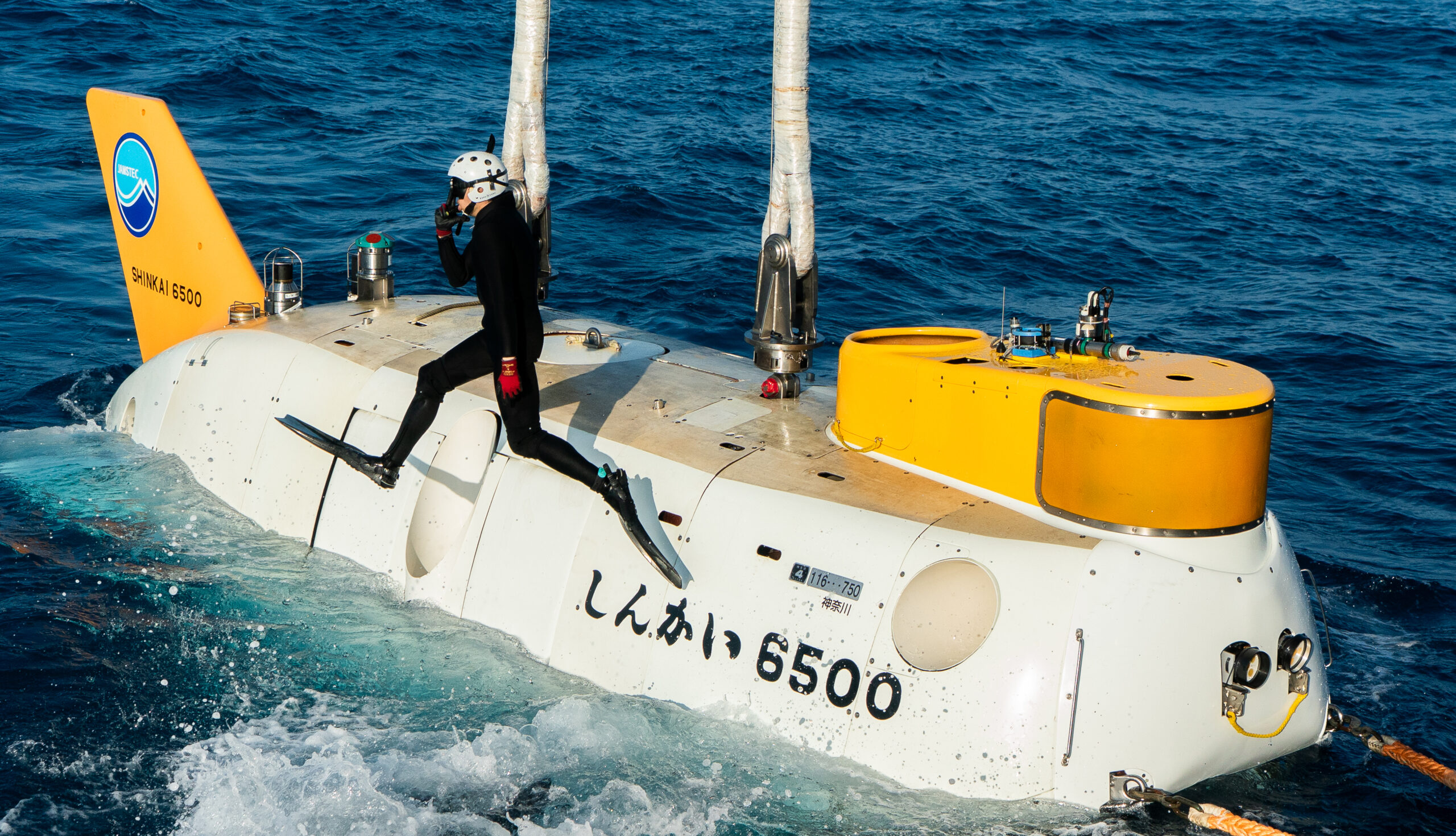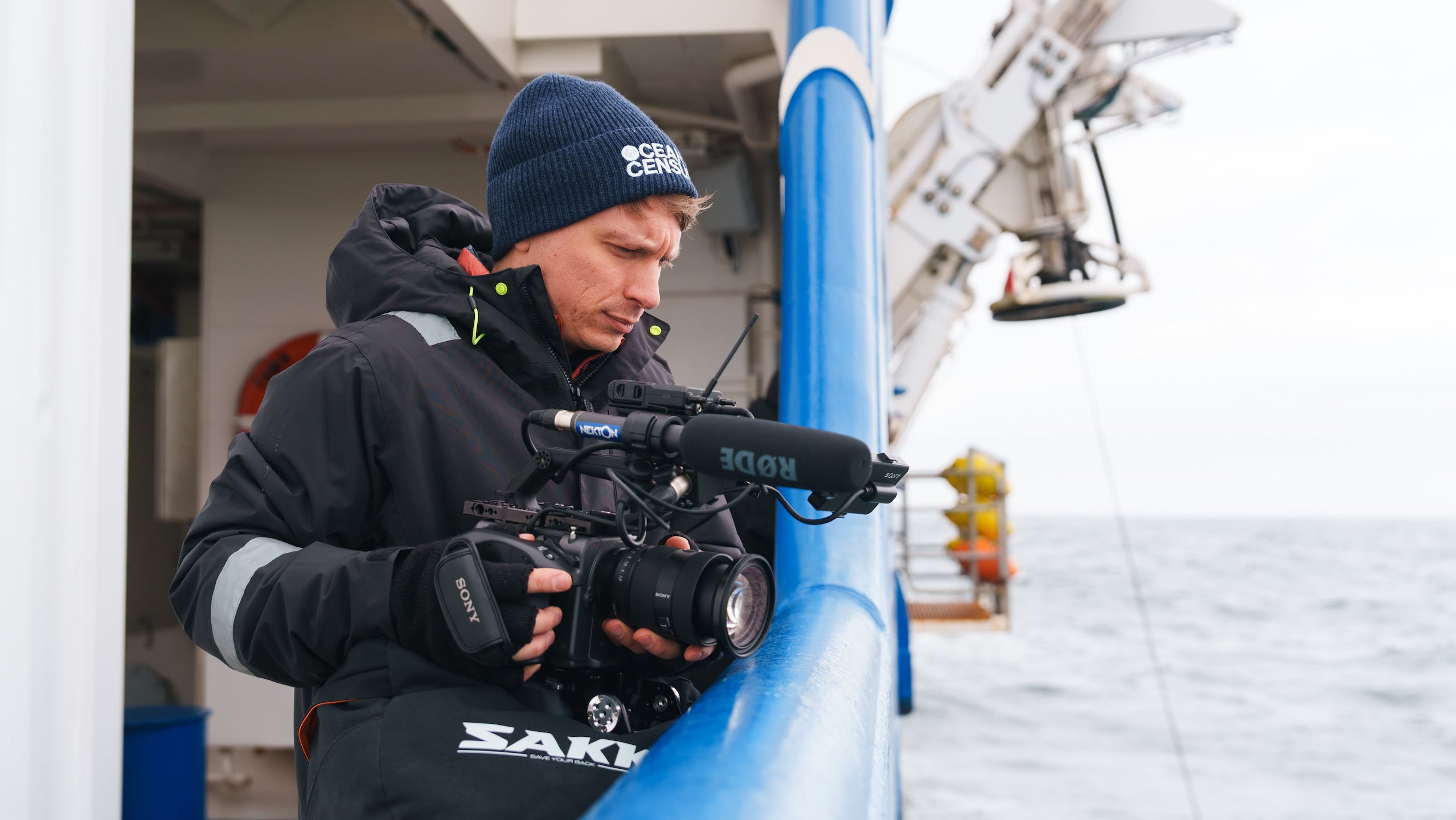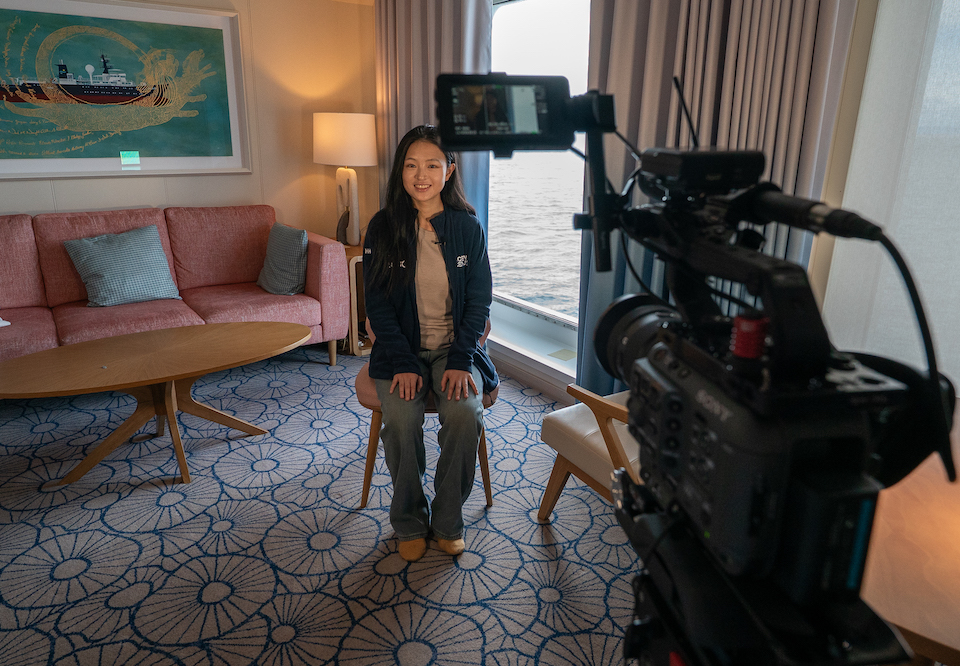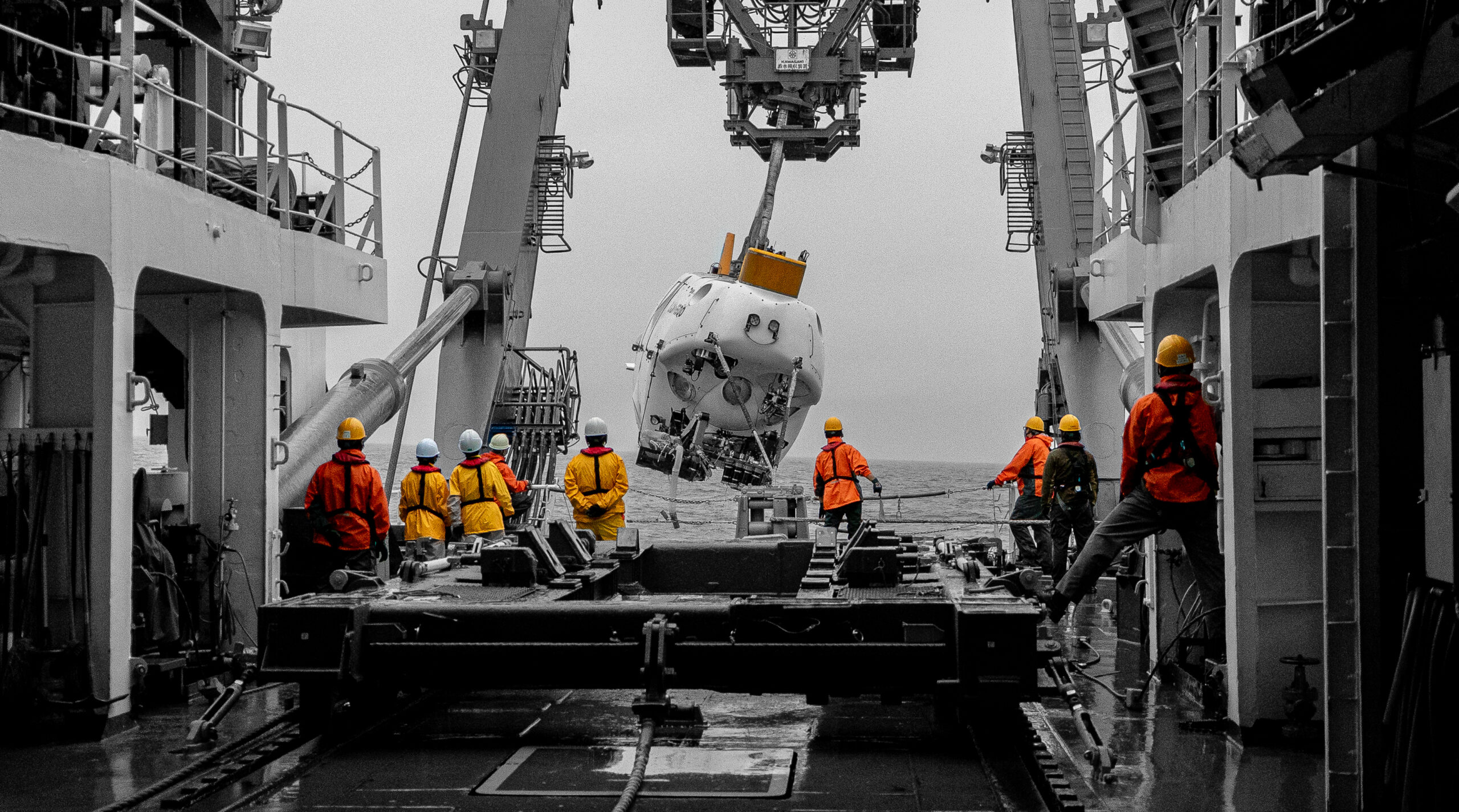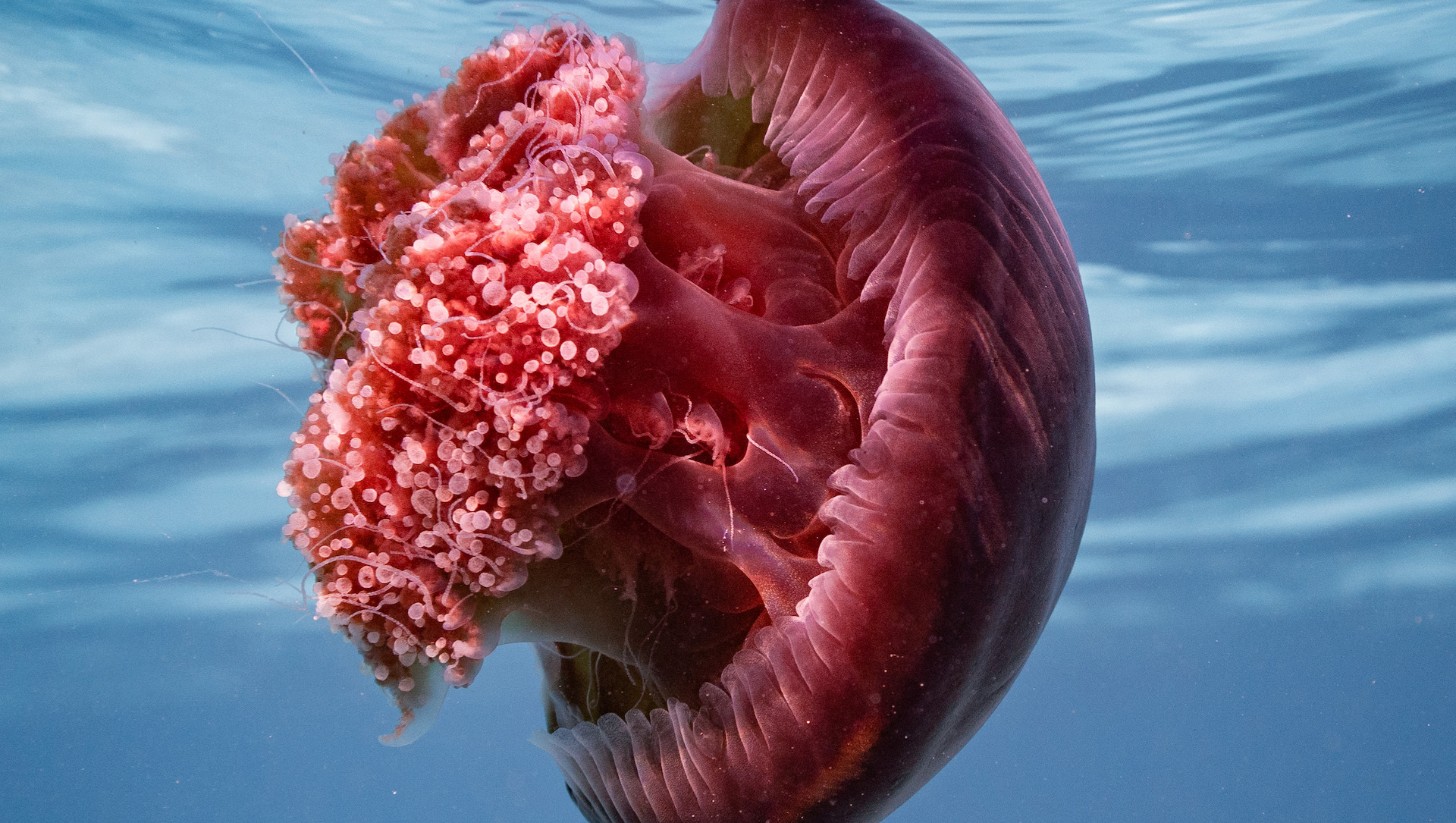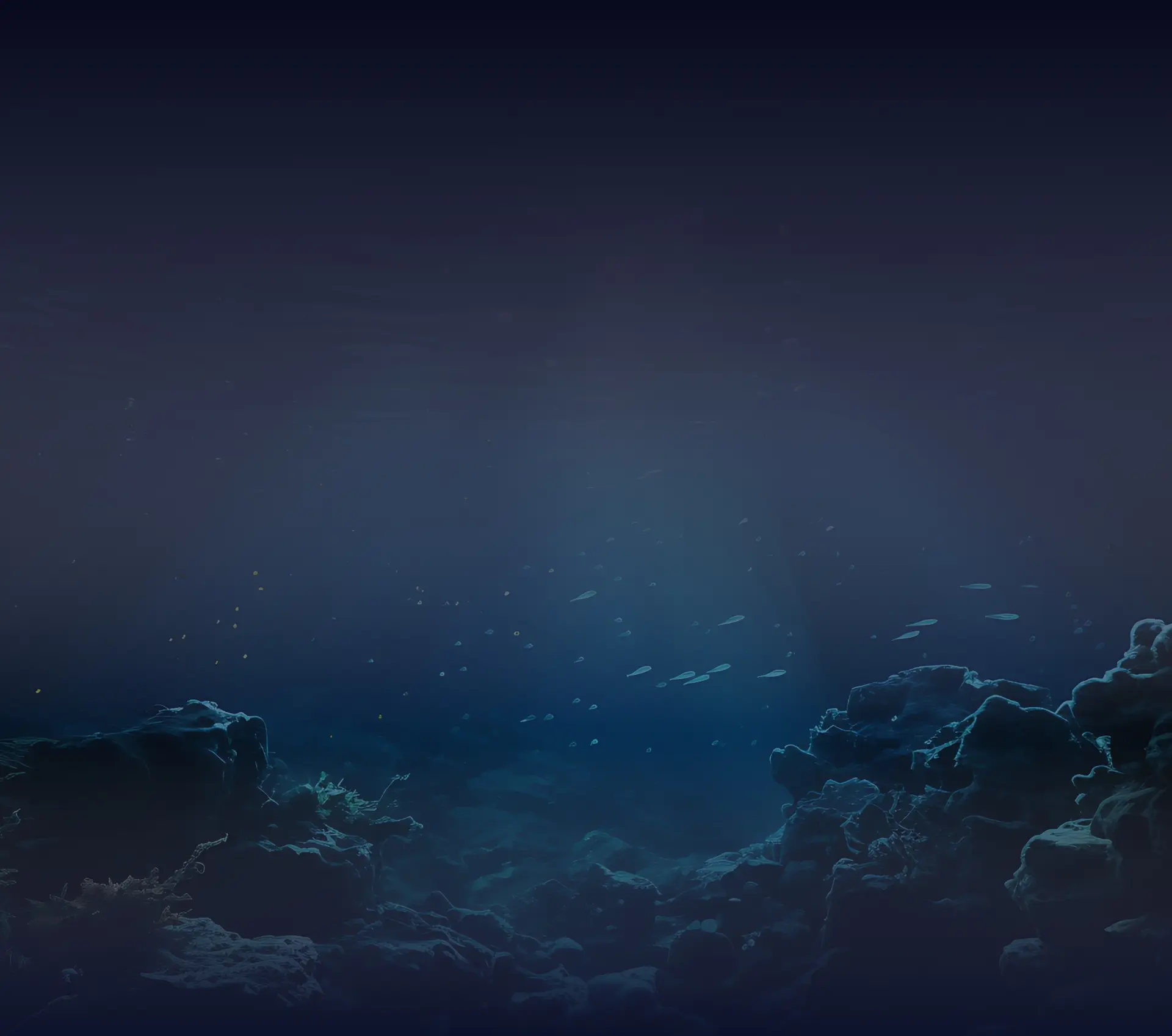
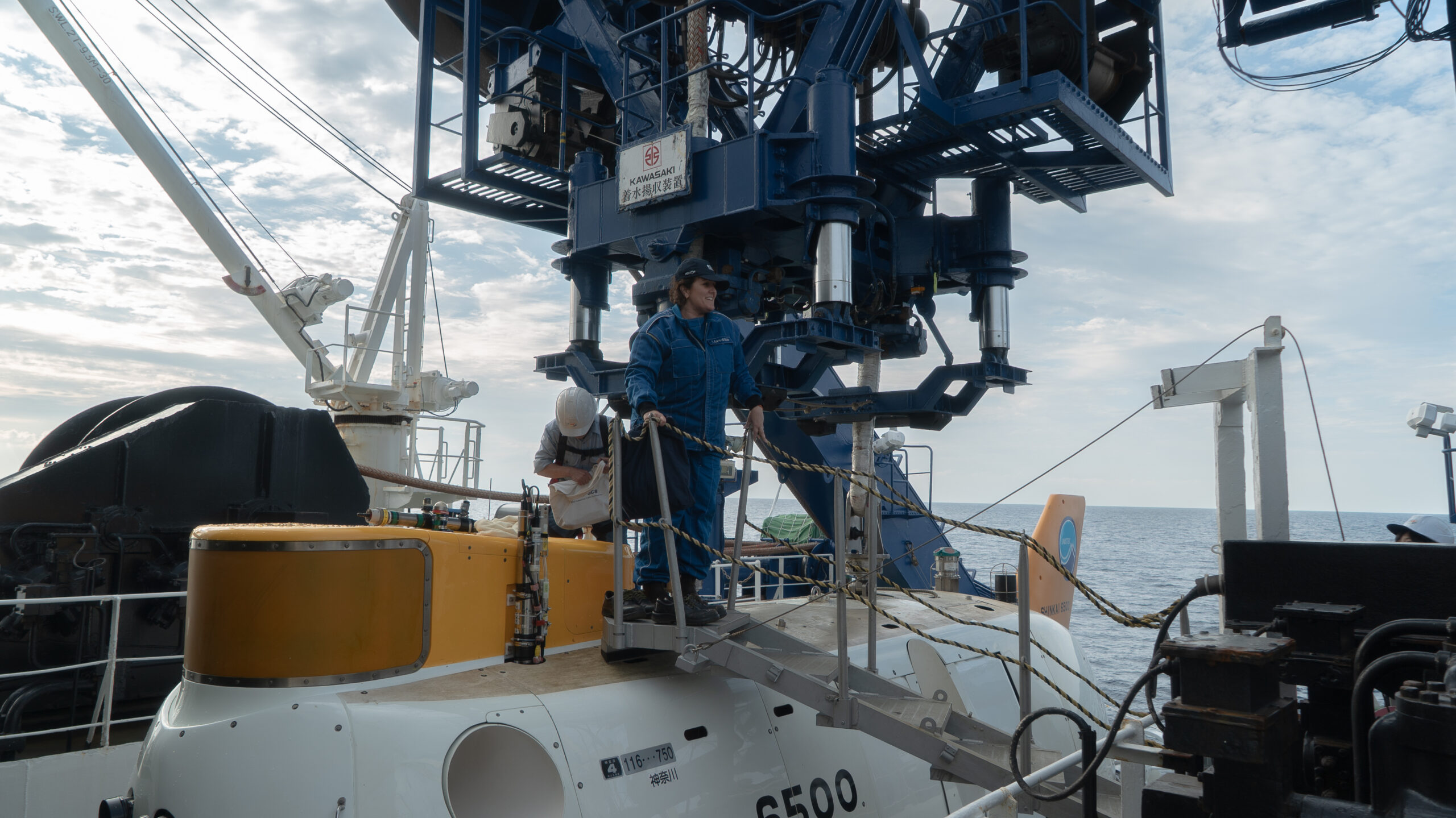
Return to the Deep:
Dr Verity Nye reflects on being back in
Shinkai 6500 after 12 years
Reflections from our Science Manager
Twelve years after her first submersible dive, Dr Verity Nye has returned to Japan to descend once again aboard Shinkai 6500, the iconic submersible operated by JAMSTEC – the Japan Agency for Marine-Earth Science and Technology.
As Science Manager for Ocean Census, Verity plays a pivotal role in the scientific goals of each mission. But this expedition carried a personal significance: in 2013, during her PhD, she dived in Shinkai at the Von Damm vent field, part of the Mid-Cayman Rise in the Caribbean. That experience, shared with colleagues from the University of Southampton and JAMSTEC, left a lasting impression.
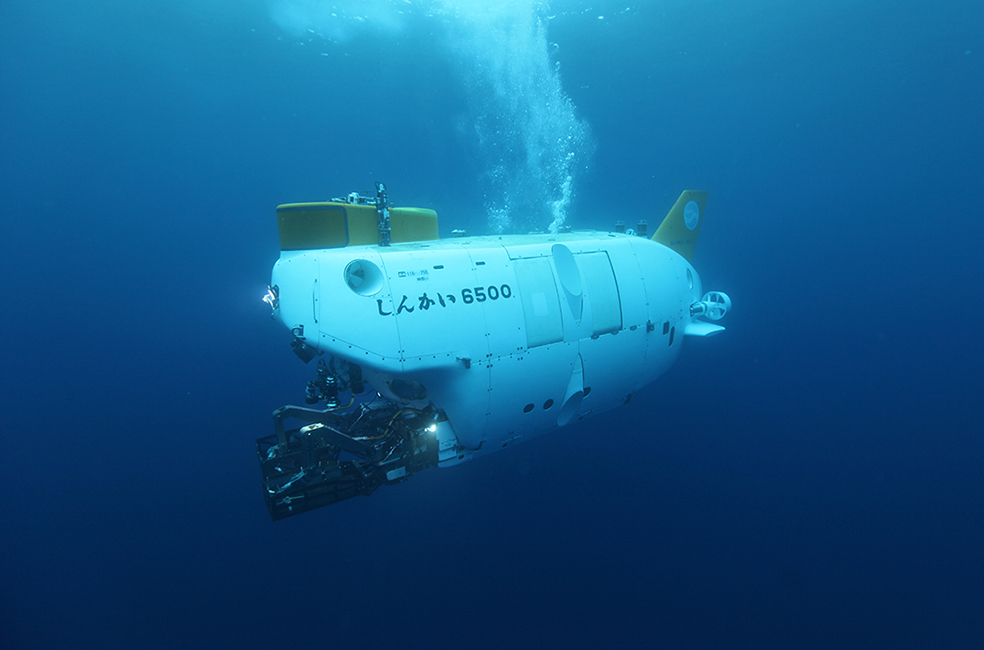
“This was a homecoming of sorts, I was in my thirties during my PhD, I’ve got a lot more experience under my belt now, and you never know if you’ll get those opportunities again.”
This month, aboard the research vessel Yokosuka, Verity once again boarded Shinkai and, descended into the deep.
Where Are We Now
This part of the 2025 Ocean Census: JAMSTEC-Shinkai expedition is focused on the Nankai Trough off the south coast of Japan, a tectonically active region where cold seeps create rich, diverse habitats.
“We’re south of Japan, sitting above a seafloor that’s about 2,500 metres below us,” Verity explained. “We’re diving at the Nankai Trough because although people have been to some of these sites before, they haven’t been explored much. Some sites haven’t been visited for over 25 years.”
By revisiting previously sampled areas the team assess changes in the environment and communities and, crucially, search for new species. Verity’s most recent dive mirrored her first in many ways – in excitement, anticipation, and emotional impact.
“I felt the same on my second dive as I did on my first. So excited and thrilled to have that opportunity. I just couldn’t wait to get down there. Looking at life in its natural habitat, something someone might never have seen, maybe even a new species , is incredibly beautiful. There’s a sense of wonder,” said Verity.
During the dive, the Shinkai team spent almost 5 hours on the seafloor; observing, recording, and collecting. “We know there’s so much of the deep sea that’s never been observed. We’ve just seen a tiny pinprick of it, and it covers 66% of our planet.”
“It actually makes me feel quite emotional to go down in the submersible. When I was there yesterday, waiting to go down, seeing my friends and colleagues waving me off, I had tears in my eyes and a lump in my throat. Coming back up again, I had another moment thinking, how lucky am I to be able to do this — and to do it again.”
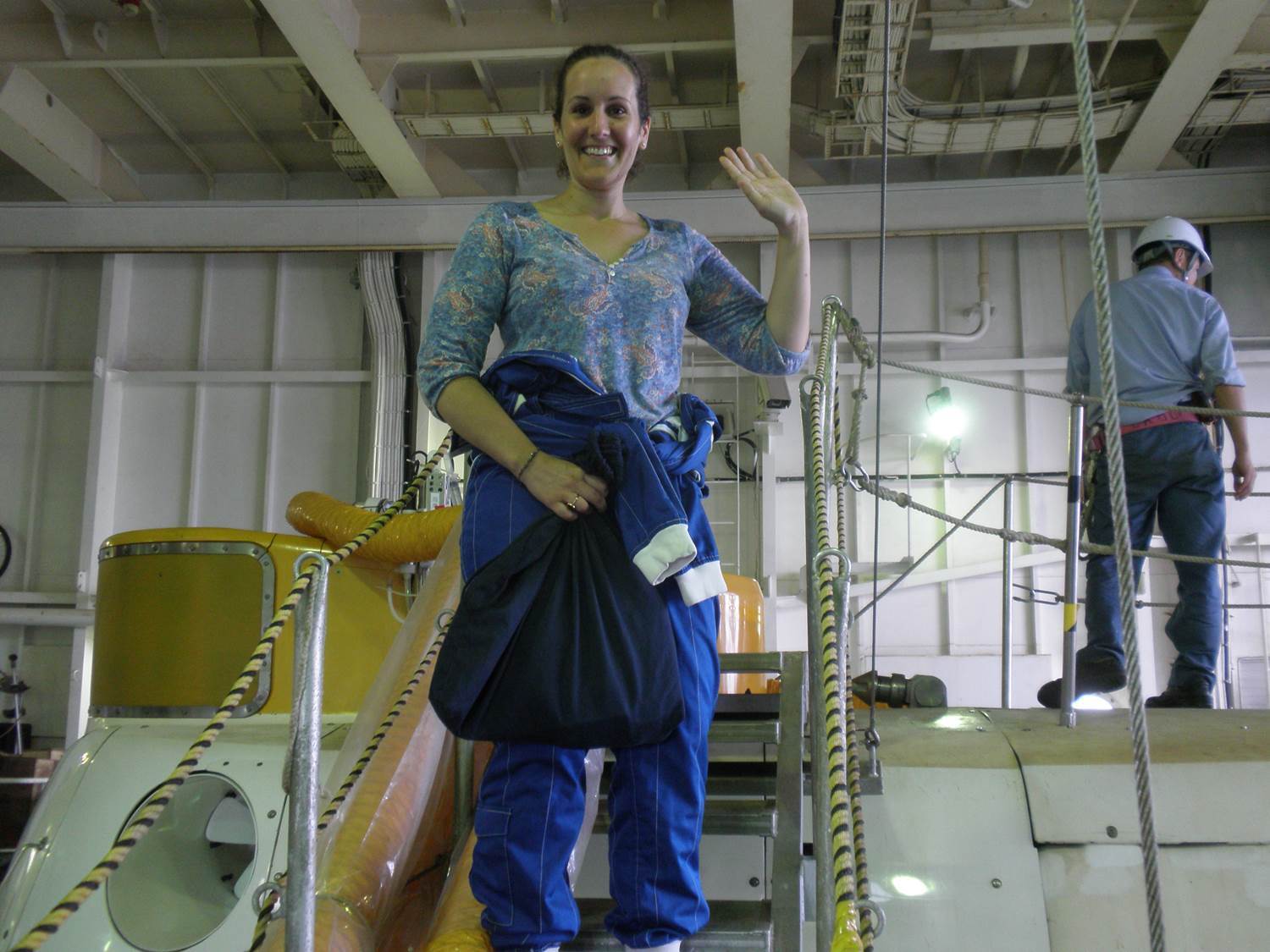
Why submersibles still matter
In a time when remotely operated and autonomous vehicles are increasingly common, Verity sees human-operated submersibles as an essential part of the research toolkit.
“66% of our planet is deep sea. And we’ve only observed 0.001% of it [with human eyes]. So we need submersibles, as well as autonomous vehicles and remotely operated vehicles, to try and fill in those gaps – to go and observe places we haven’t been before and see what lives down there.”
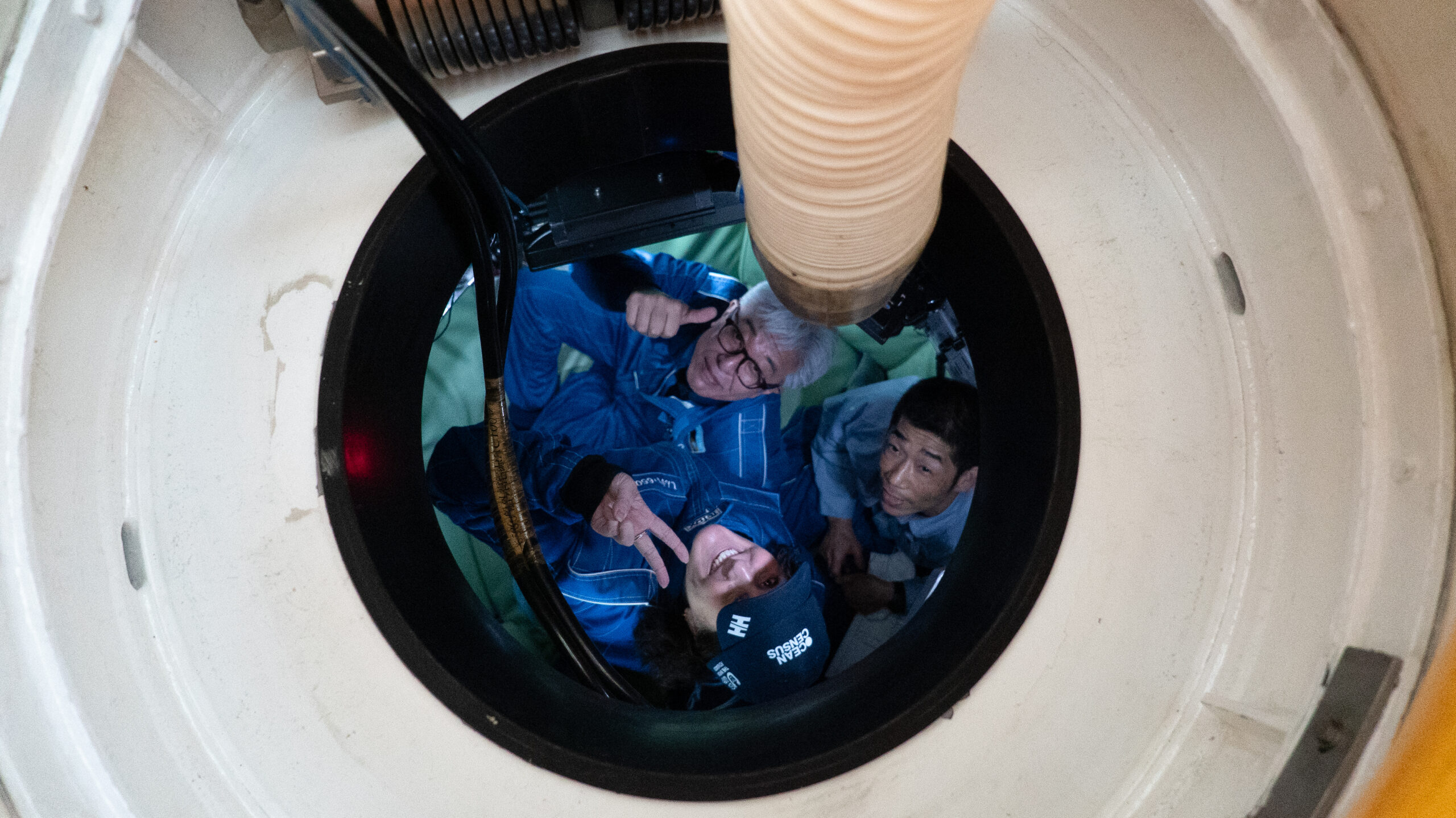
A deeper connection
“My perspective on ocean conservation has deepened,” said Verity. “I think we all need to take urgent action to help protect our ocean, and to recognise how connected we are to it.”
“There’s economic value in the ocean; the fish we eat, the resources, the recreation. But the greatest value is that sense of wonder and the enjoyment we get from being in nature. When you’re down there at 2,500 metres, it gives you a totally different perspective. It’s an extra-rich sense of connection.”
The expedition is also an example of international cooperation. JAMSTEC is a core partner in the Ocean Census Global Alliance, and the mission includes early career researchers from both partners.
“It’s important that we work together with our partners, to give each other opportunities and get other researchers involved, particularly early career researchers from the Ocean Census Network as well as JAMSTEC.”
“We’re diving at the seamounts because they’re areas of high biodiversity, with IUCN endangered species and marine protected areas. But there’s still a lot we don’t know, we can’t protect or manage what we haven’t discovered.”
Verity’s reunion with Shinkai was more than just a professional milestone. It was a reminder of why she first became passionate about marine science and why she continues to love to explore and study the deep ocean.
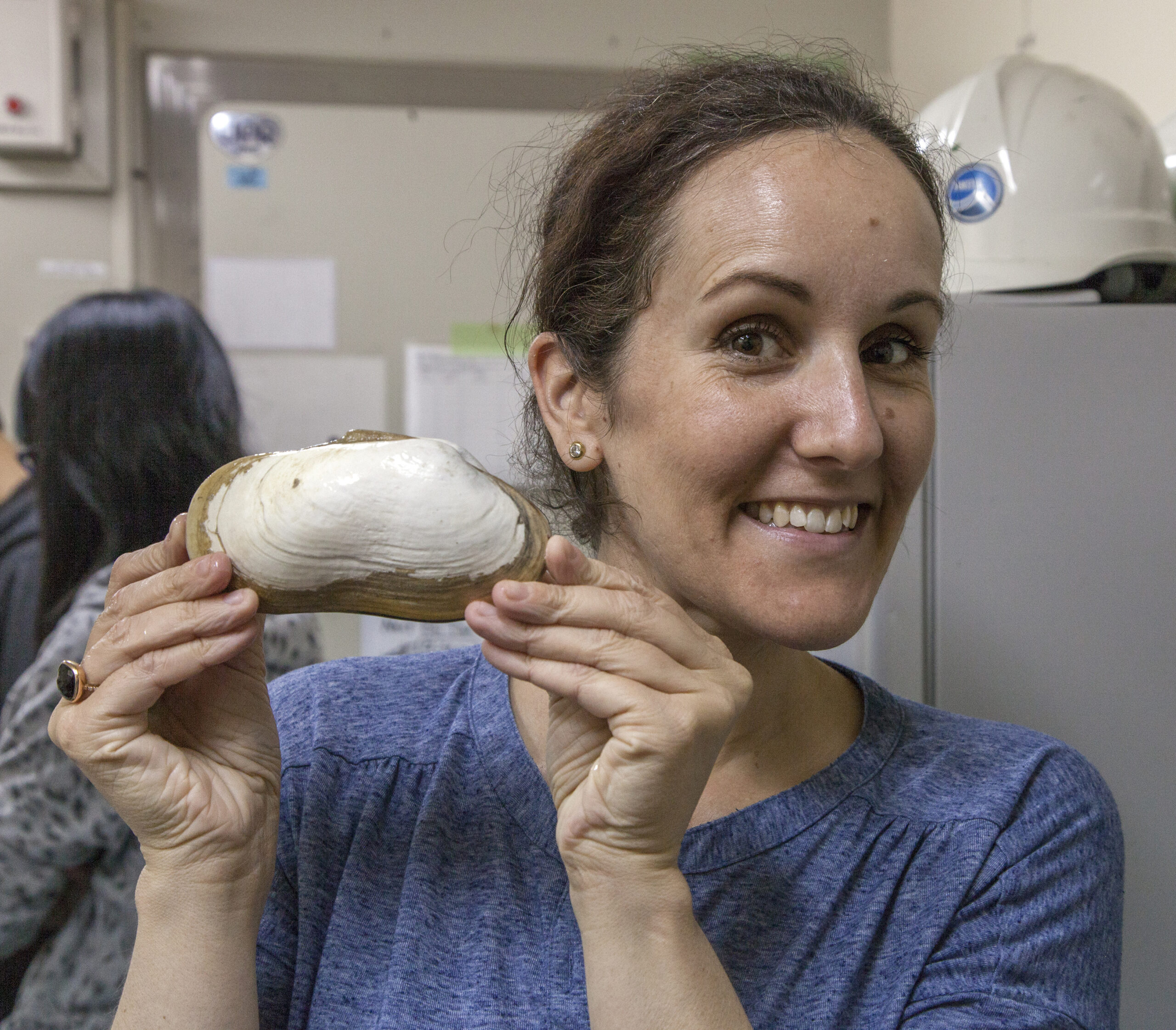
Related News
Join the census
The Ocean Census Alliance unites national and philanthropic marine institutes, museums, and universities, backed by governments, philanthropy, business and civil society partners.
